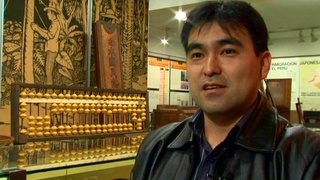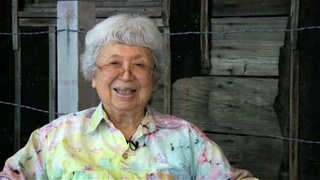Interviews
Hardship to be a Kabuki dancer as a woman
100 pounds, I carried 100-pound sack every day before I put this costume to dance. Or else you can’t manage. It’s that heavy. Try it. It’s heavy. And you have to put the kanzashi – that big kanzashi – geta, and this costume and underneath, you have another costume on. So you have to practice carrying it. That’s Kabuki. That’s why it’s for men. A woman cannot do it. It’s very heavy.
So you have to practice carrying a sack of rice every day and see your power – how you could carry that. And then you have to try this on. And then you have to start thinking about your dance – the weight…there’s a lot of training you have to go through. But this Daiichi-sensei gave me this kimono because he stayed with us and he wanted to repay us back. So he gave us this costume.
Date: November 30, 2004
Location: California, US
Interviewer: Nancy Araki and John Esaki
Contributed by: Watase Media Arts Center, Japanese American National Museum





